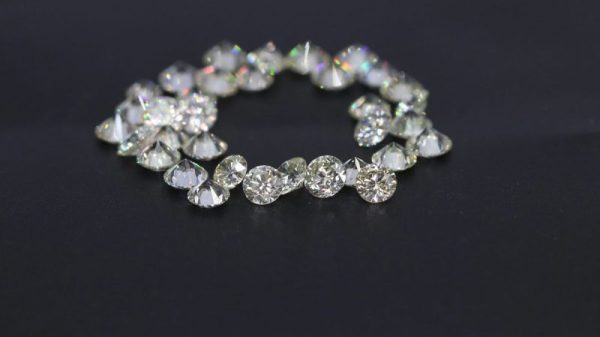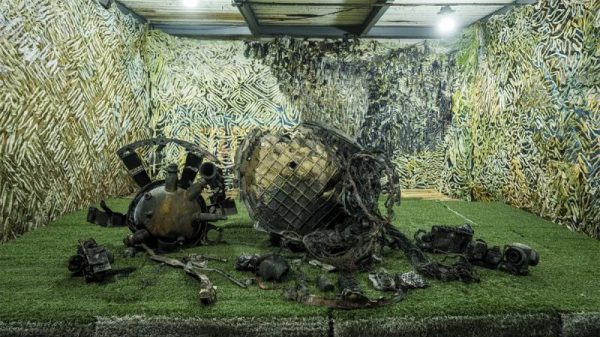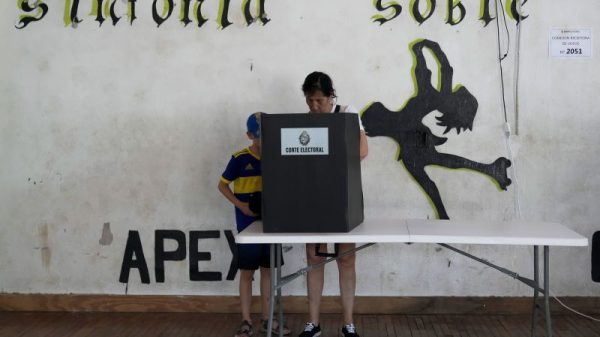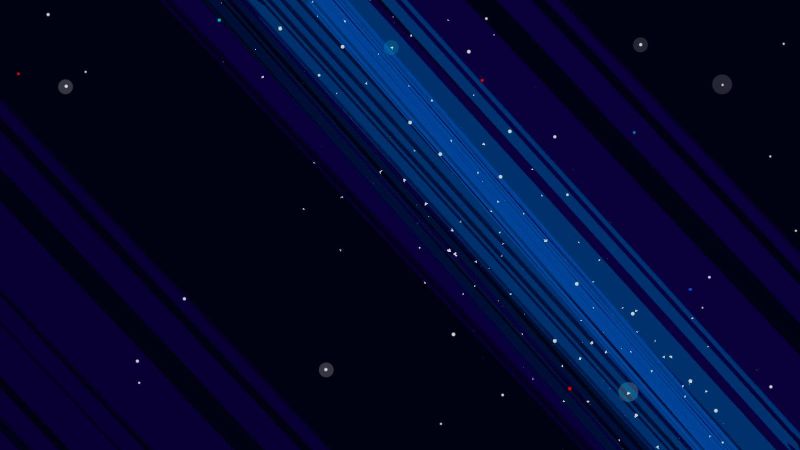When NASA’s Lucy mission flew by its first asteroid this week, its cameras captured a surprise.
The Lucy spacecraft zoomed by the small asteroid Dinkinesh, located in our solar system’s main asteroid belt between the orbits of Mars and Jupiter. But what astronomers thought was one asteroid is really a binary pair of space rocks.
Hal Levison, principal investigator for Lucy at the Southwest Research Institute, said Dinkinesh, which means “marvelous” in the Amharic language of Ethiopia, “really did live up to its name.”
“This is marvelous,” Levison said in a statement. “When Lucy was originally selected for flight, we planned to fly by seven asteroids. With the addition of Dinkinesh, two Trojan moons, and now this satellite, we’ve turned it up to 11.”
Astronomers had their first hints that Dinkinesh might be a duo when Lucy’s instrument suite detected changes in brightness in the weeks leading up to the spacecraft’s close approach on Wednesday.
What the Dinkinesh duo could reveal
The Lucy team believes the larger asteroid is a half-mile (805 meters) wide and the smaller space rock is 0.15 miles (220 meters) across.
Lucy came within 265 miles (425 kilometers) of the asteroid’s surface during its closest approach Wednesday afternoon.
The close approach was designed to help the Lucy spacecraft test its suite of equipment, including its terminal tracking system, which allows the spacecraft to locate the space rock autonomously and keep it within view while flying by at 10,000 miles per hour (4.5 kilometers per second).
“This is an awesome series of images. They indicate that the terminal tracking system worked as intended, even when the universe presented us with a more difficult target than we expected,” said Tom Kennedy, guidance and navigation engineer at Lockheed Martin, in a statement. (Lockheed Martin is a NASA partner on the Lucy mission.)
“It’s one thing to simulate, test, and practice,” Kennedy added. “It’s another thing entirely to see it actually happen.”
The data collected during the flyby will also offer insight into small asteroids, providing a comparison with others that previous NASA missions have observed.
“We knew this was going to be the smallest main belt asteroid ever seen up close,” said Keith Noll, Lucy project scientist from NASA’s Goddard Space Flight Center in Greenbelt, Maryland, in a statement. “The fact that it is two makes it even more exciting. In some ways these asteroids look similar to the near-Earth asteroid binary Didymos and Dimorphos that DART saw, but there are some really interesting differences that we will be investigating.”
In September 2022, NASA’s DART mission intentionally slammed into Dimorphos, a small moon orbiting the near-Earth asteroid Didymos, to demonstrate the technology needed to alter the trajectory of a space rock.
Preparing for future flybys
The data collected during the Lucy mission flyby will continue to return to Earth over the next week. This information will help the mission team prepare for the spacecraft’s future asteroid flybys, including a close encounter with another main belt asteroid called Donaldjohanson in 2025.
Lucy’s main goal is to explore Jupiter’s Trojan asteroid swarms, which have never been explored. The Trojan asteroids, which borrow their name from Greek mythology, orbit the sun in two swarms — one that’s ahead of Jupiter, the largest planet in our solar system, and a second one that lags behind it.
So far, scientists’ main glimpses of the Trojans have largely been artist renderings or animations because the space rocks are too distant to be seen in detail with telescopes. Lucy will provide the first high-resolution images of what these asteroids look like.
Lucy is scheduled to reach the Trojan asteroids in 2027. Each of the asteroids Lucy is set to fly by differ in size and color.
The mission borrows its name from the Lucy fossil, the remains of an ancient human ancestor discovered in Ethiopia in 1974. The skeleton has helped researchers piece together aspects of human evolution, and NASA Lucy team members hope their mission will achieve a similar feat regarding the history of our solar system.
There are about 7,000 Trojan asteroids, and the largest is 160 miles (257 kilometers) across. The asteroids are like fossils themselves, representing the leftover material hanging around after the formation of giant planets in our solar system, including Jupiter, Saturn, Uranus and Neptune.
The mission will help researchers peer back in time to learn how the solar system formed 4.5 billion years ago and unlock how planets ended up in their current spots.







































